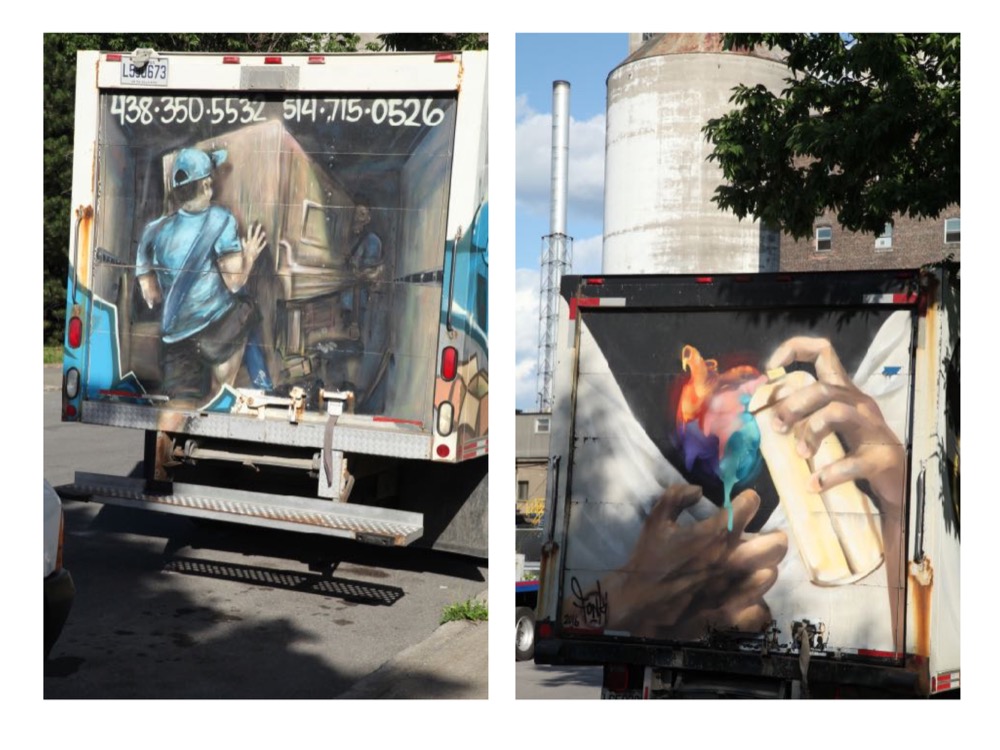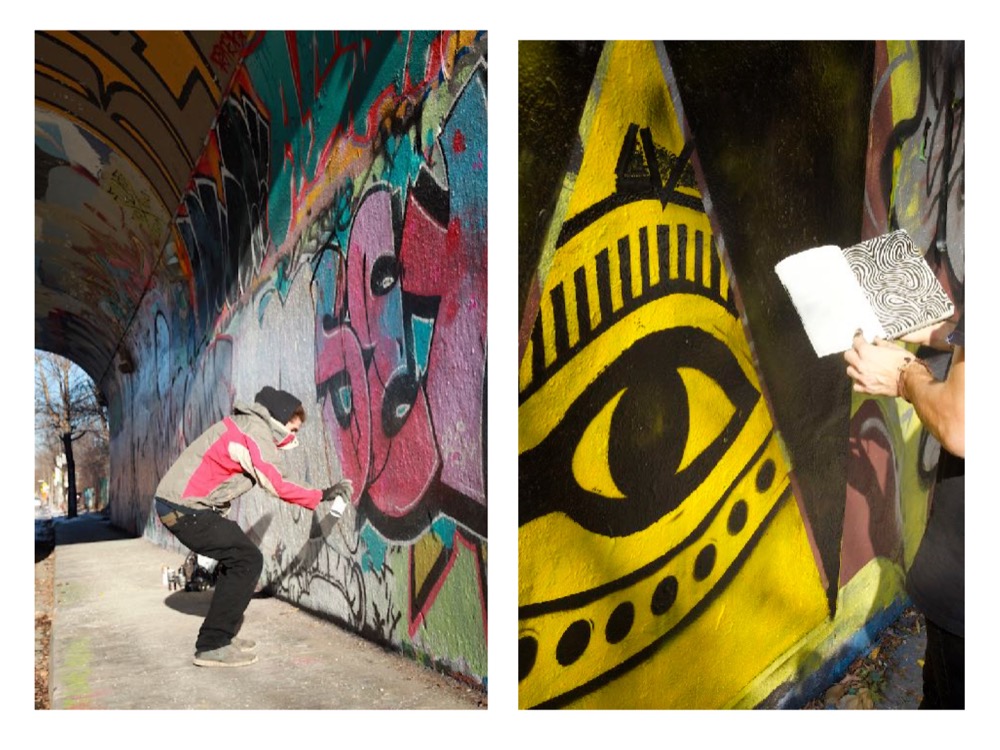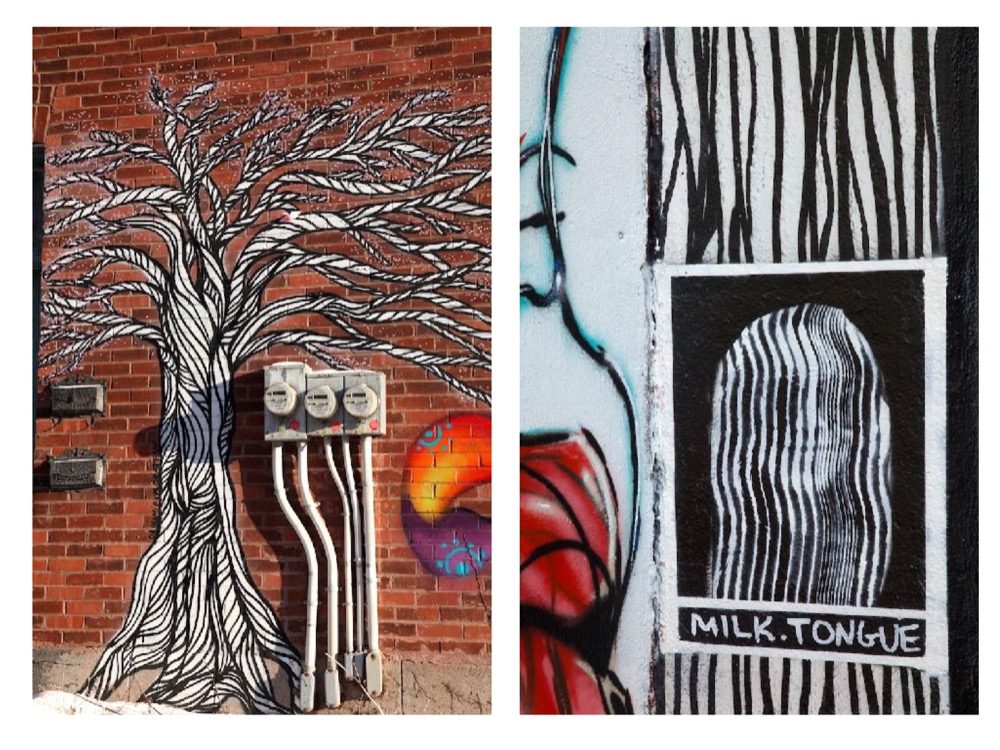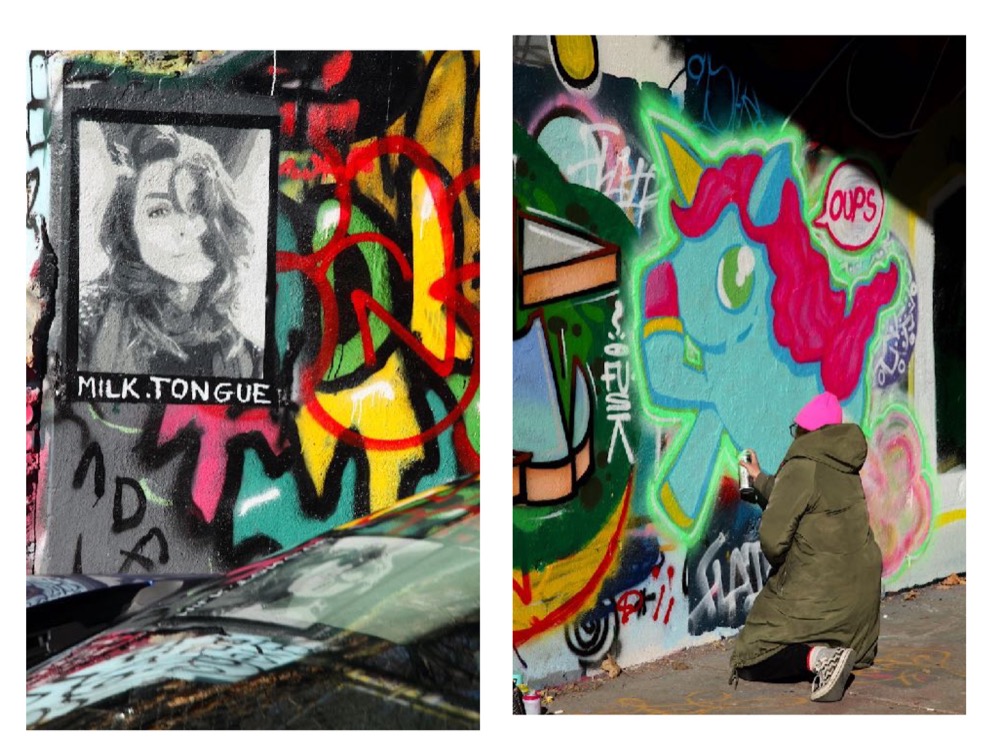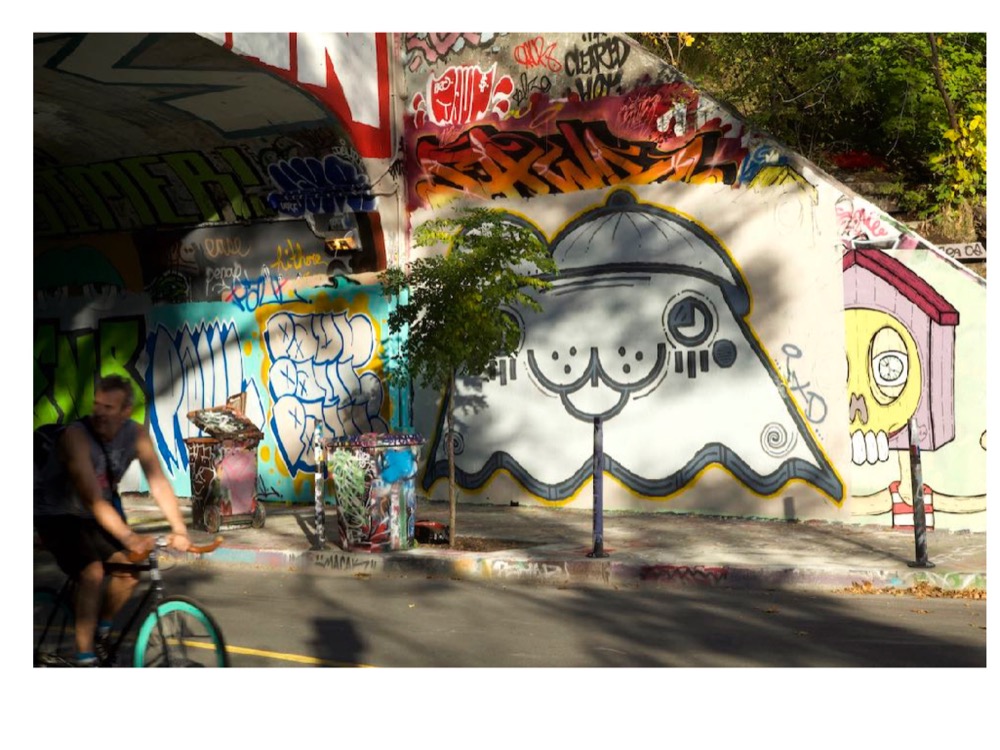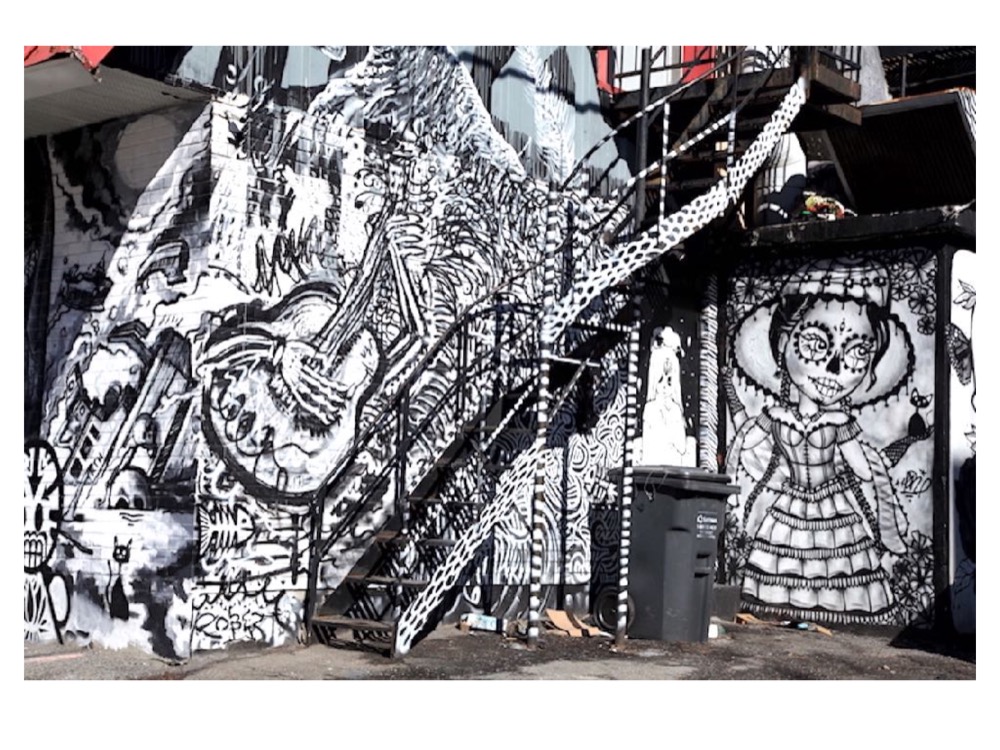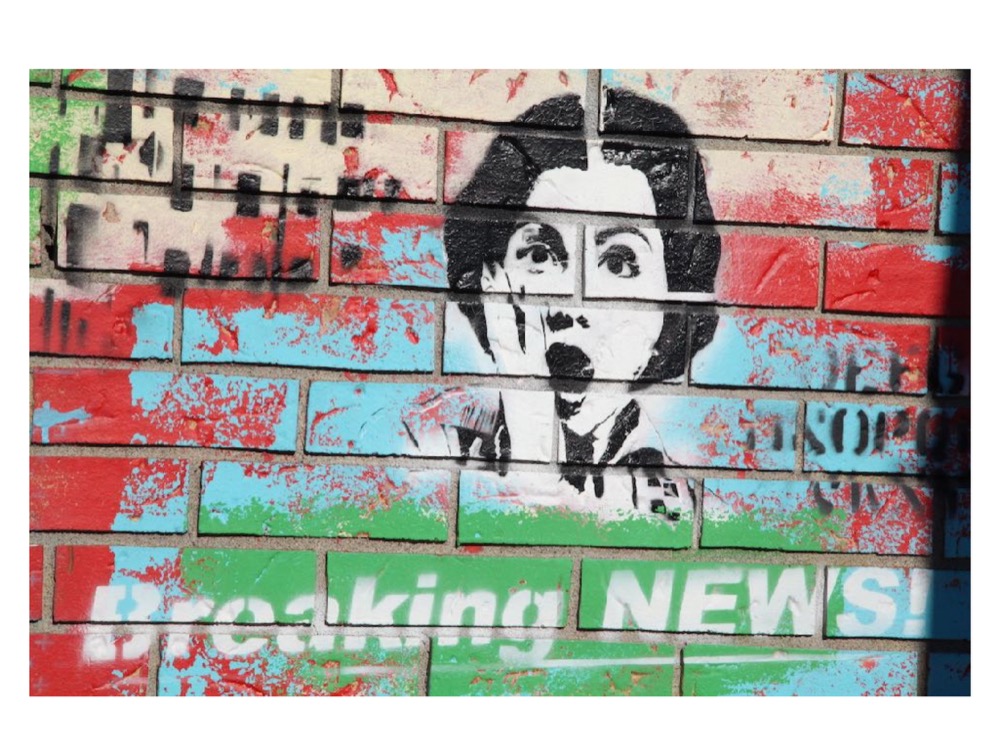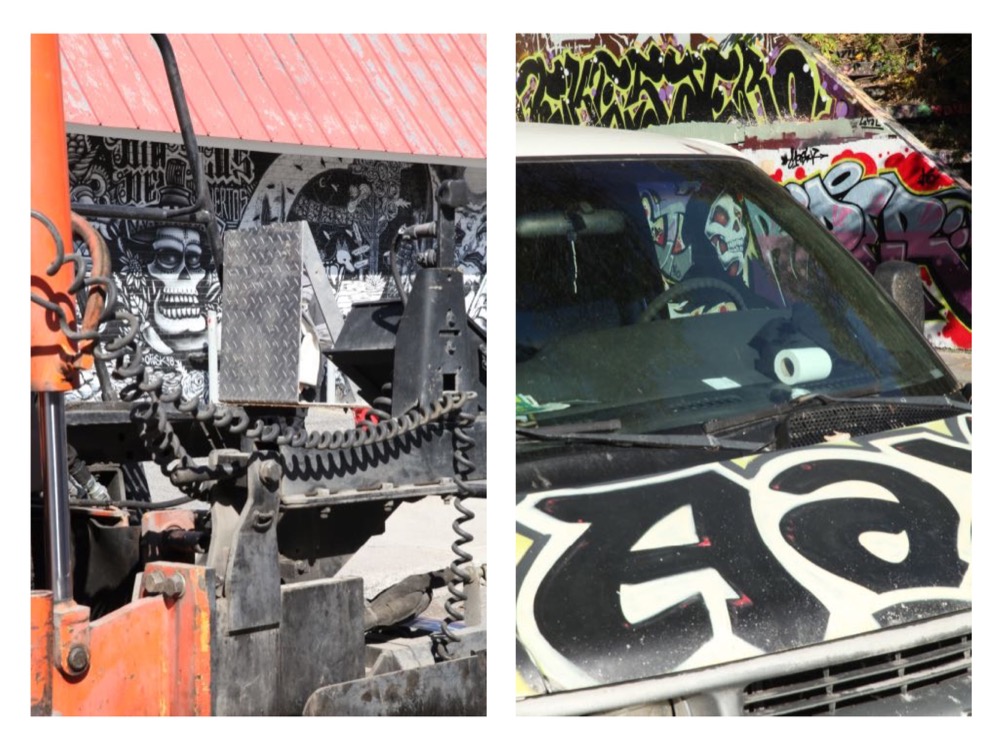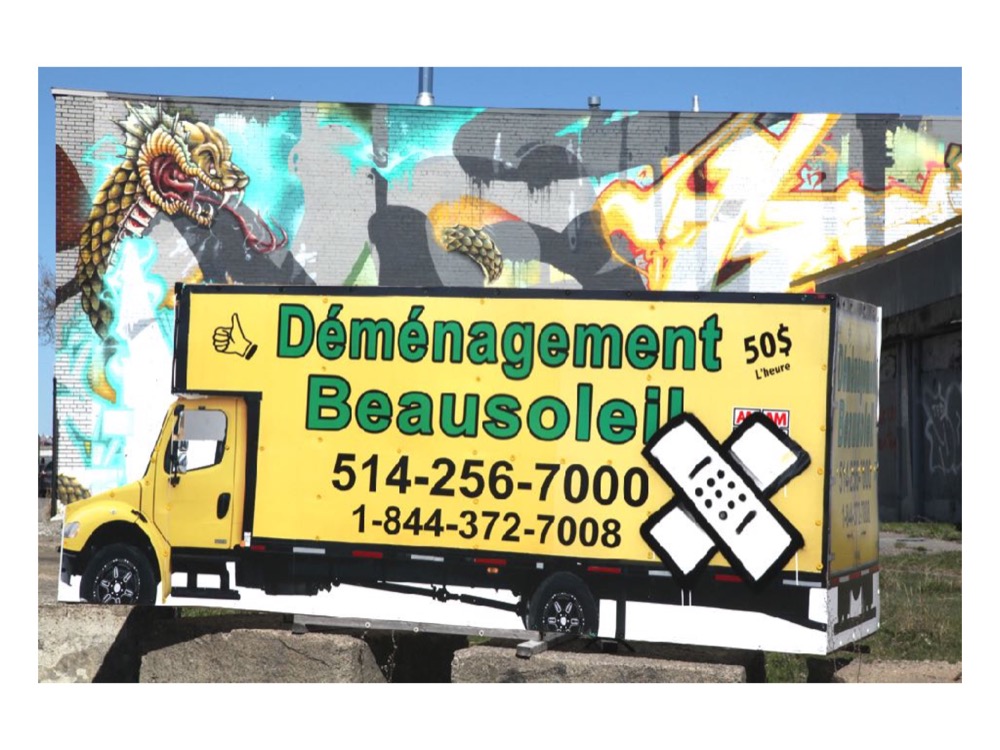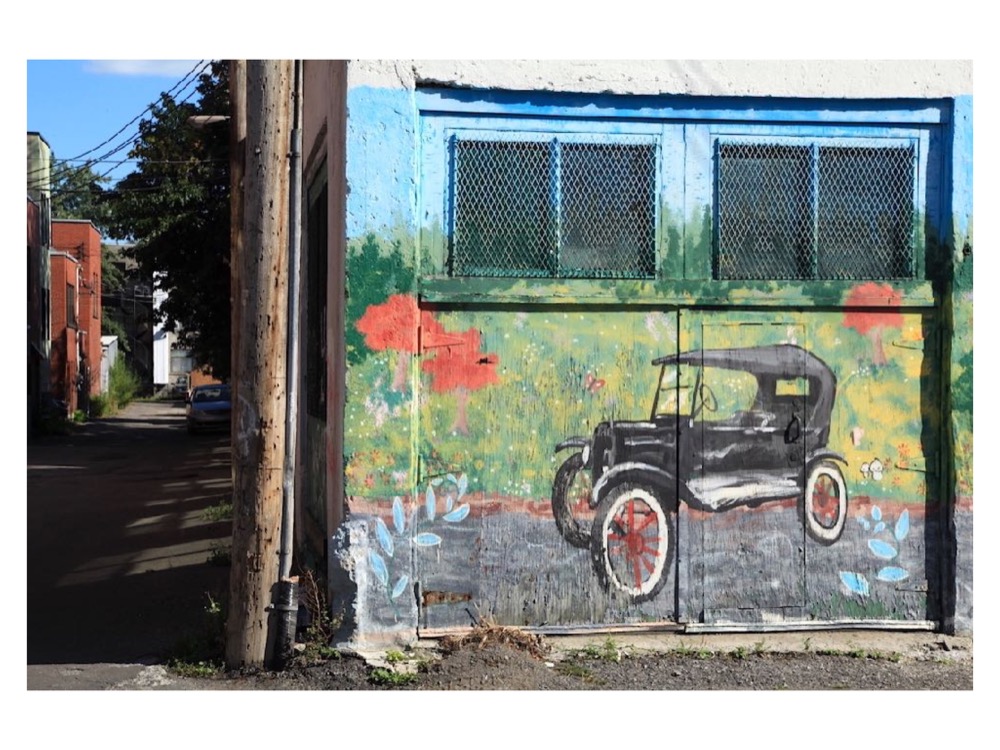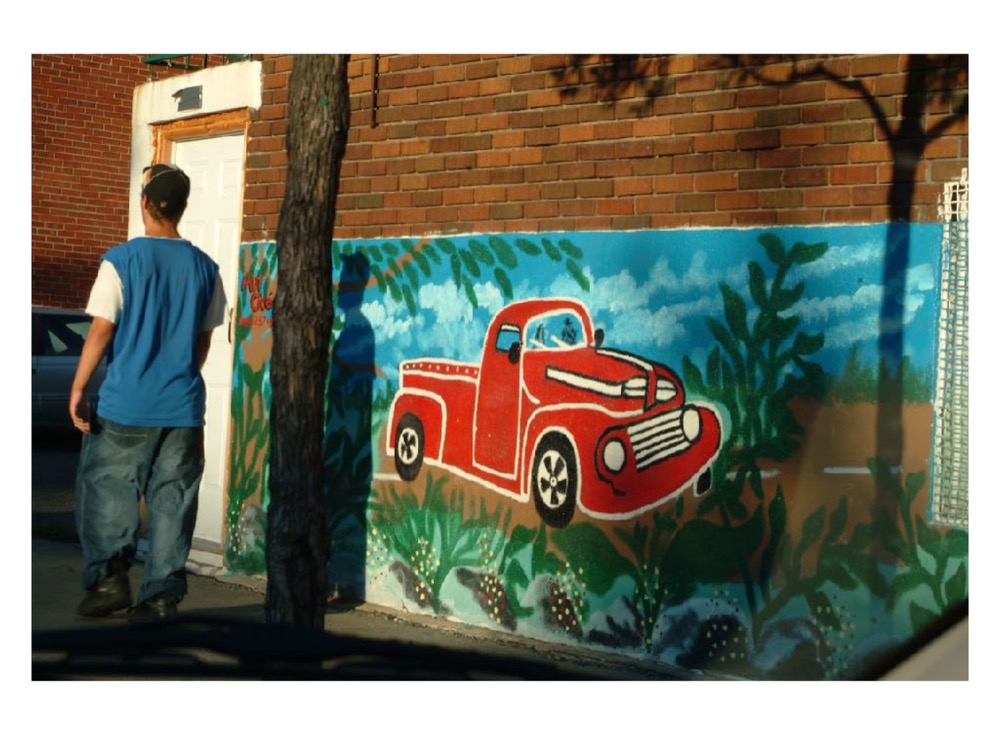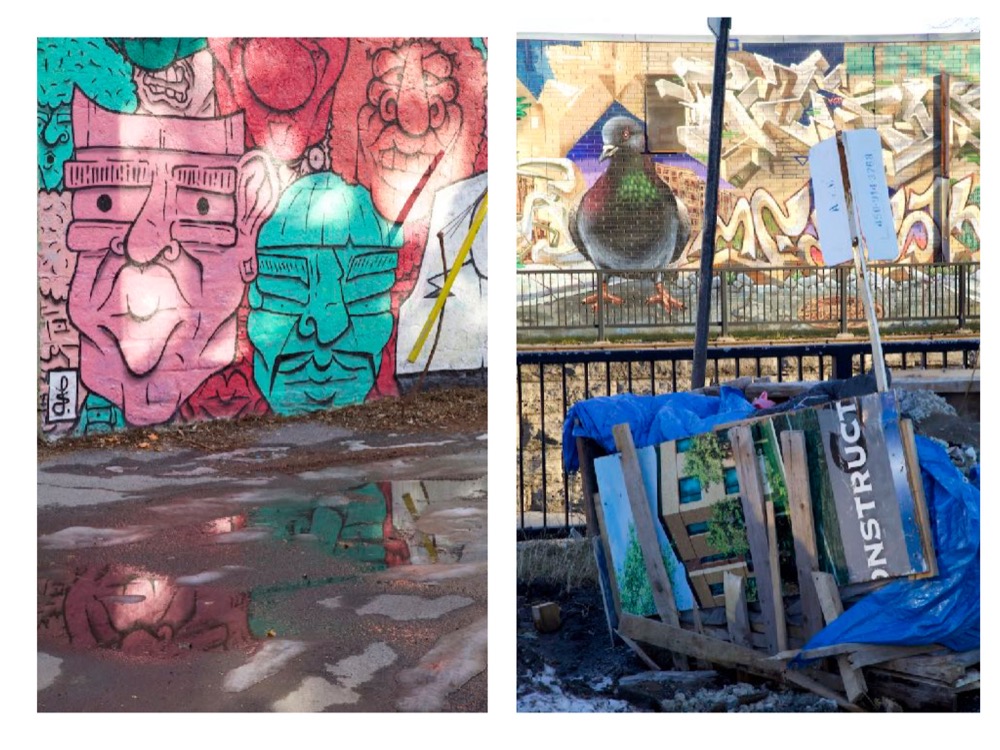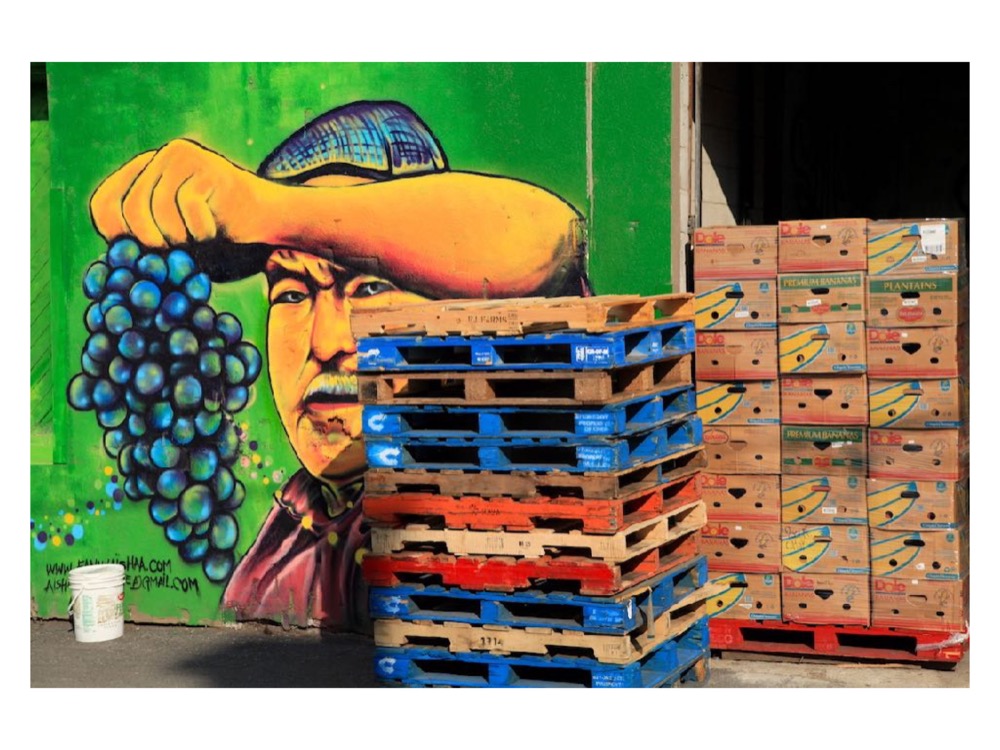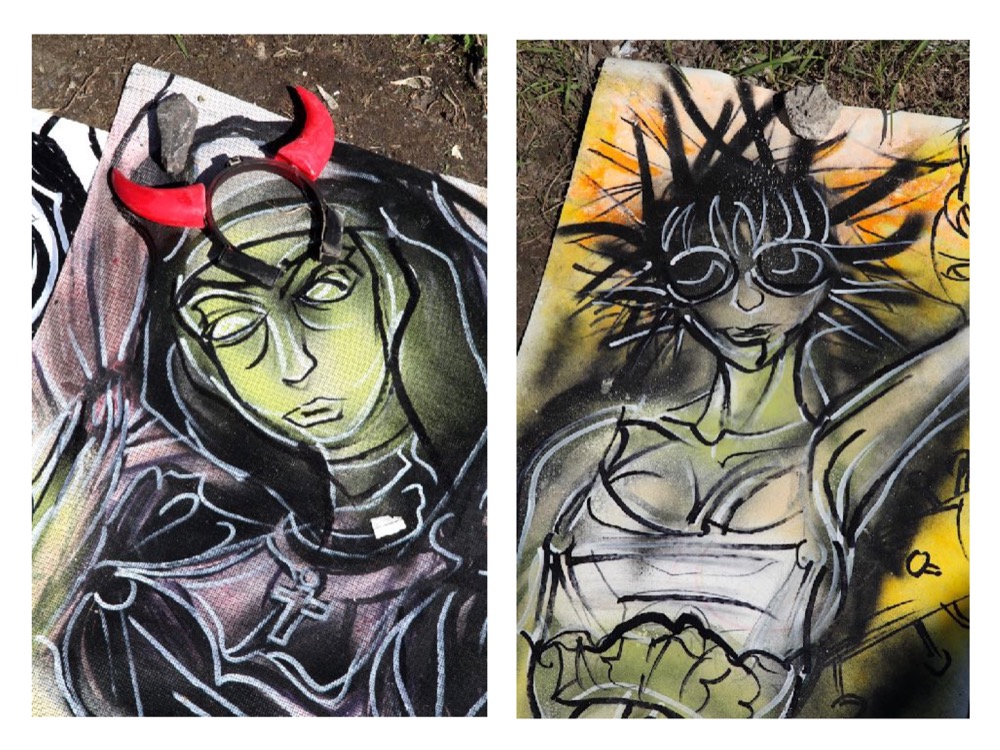[January 19, 2022]
Robert Walker explores various manifestations of street art in the neighborhood of Hochelaga-Maisonneuve where he lives. A colorful project in which graffiti and murals compete with superheros and other comic book characters to attest of a vibrant popular culture.
By Robert Walker
There is a railway overpass on Rue Rouen in Montreal’s east end that has been given over to graffiti artists. There is constant activity at the site, sometimes between fifteen and twenty artists working simultaneously. I asked one of them if there were any unwritten rules concerning the over-painting of another artist’s work. He replied that there were no rules; over-painting was at the discretion of any individual artist. He thoughtfully explained to me, “The art was in the doing,” a statement I thought could have echoed an sentiment expressed earlier by Jackson Pollock, but in his case, the results of the “doing” are still being revered seventy-five years later. I asked one artist if he thought his complex mural, created over many hours, would last a week. “A week!” he exclaimed. “Hopefully twenty-four hours!”
Regardless of the fugitive nature of the work being created, a joyous communal atmosphere prevailed, accompanied by a cacophony of music being blared from several portable devices. I was reminded of my years in art school, where the completely opposite atmosphere existed – all the students deadly earnest, working with anxiety and calculation, with a spirit of competition rather than harmony and cooperation.
While most of the work being produced in “the tunnel” fell into the category of what I call Graffiti internationale, several art-historical references seeped into a few of the works – such as an op art rendering of the Mona Lisa, reminiscent of the work of Victor Vasarely, and variations on Andy Warhol’s pop art soup cans.
A few blocks to the east on the same street, in stark contrast, there is a small front yard where the antithesis to the graffiti extravaganza exists. Although it exposes a definite generational divide in conception, it’s no less creative. A lone practitioner has produced, over a decade, a series of cut-out painted figures on plywood, portraying a wide variety of fictitious characters. Featured are a collection of American comic-book superheroes, along with a group of well-known European bande dessinée characters. The figures are usually set up on seasonal occasions for the express delight of children. The colourful but static tableaux seem to function as a perfect foil with which to contrast the aggressive expressiveness of the graffiti artists against these simple, one-dimensional graphics reflecting unabashed nostalgia for a less complicated time.
The rest of the working-class neighbourhood of Hochelaga-Maisonneuve is peppered with an abundance of both amateur and professionally produced murals adorning sheds and garage doors in back lanes and the walls of small businesses. Questionable quality notwithstanding, they all seem to successfully blend into the urban fabric.
When viewing some of the imagery of wild animals in the tunnel, I was reminded of a story told to me by the American art critic Max Kozloff. In the early 1960s, he had an opportunity to see the eighteen-thousand-year-old pre-historic paintings in the Lascaux caves in southern France. He was one of the last visitors to be allowed in before the caves were permanently closed to the public because of the deterioration of the murals due to human contamination. He said he was awestruck by the beauty of the paintings and dazzled by the bright colours, which reminded him of being in a discothèque. One can only imagine what future archaeologists will make of our civilization when they analyze the countless layers of images in the Tunnel de Rouen.


